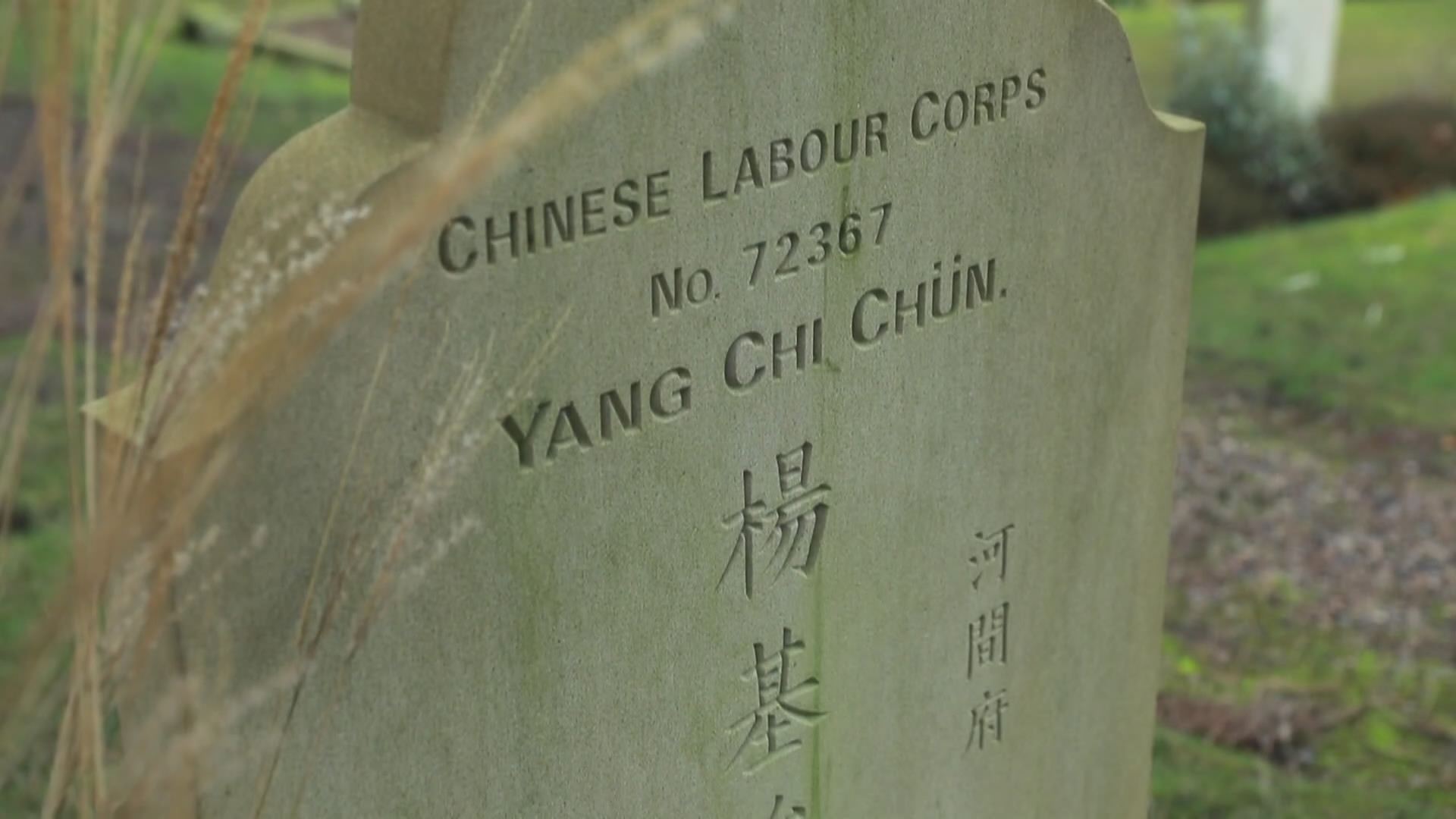
World
21:31, 18-Mar-2018
English town commemorates wartime Chinese Labour Corps
By Zhang He

During the First World War, almost 100,000 Chinese laborers were recruited by the British Army to provide logistical help. A vast majority passed through the town of Folkestone in southeastern England on their way to mainland Europe. Ahead of the Qingming Festival, locals in Folkestone are holding a commemoration service to honor the contributions of the Chinese Labour Corps.

Folkestone commemoration ceremony for the Chinese Labour Corps at Shorncliffe Military Cemetery on March 14, 2018. /CGTN Photo
Folkestone commemoration ceremony for the Chinese Labour Corps at Shorncliffe Military Cemetery on March 14, 2018. /CGTN Photo
Six men were buried in Folkestone though it is likely that their descendants do not know of the existence of the graves.
It has been 100 years since the end of the First World War and it is only now that the untold stories of the Chinese Labour Corps are being gradually unveiled.
"They lost their lives out there. I think we should recognize the contribution the Chinese give to the First World War. It hasn't been recognized before," said Roger West, mayor of Folkestone, "Now I think we need to honor them. It's something we should do every year. "

Chinese Labour Corps graves at Shorncliffe Military Cemetery in Folkestone, southeast England. /CGTN Photo
Chinese Labour Corps graves at Shorncliffe Military Cemetery in Folkestone, southeast England. /CGTN Photo
In Folkestone, there is little evidence of the existence of the Chinese Labour Corps. But now, people have been collecting whatever artifacts, memory, or account they can find to piece together this forgotten story.
A precious ID booklet of a CLC member can be found in Folkestone museum, showing the true identity of these Chinese laborers. A majority of them passed through the town on the way into mainland Europe.

ID booklet of a member of Chinese Labour Corps. /CGTN photo
ID booklet of a member of Chinese Labour Corps. /CGTN photo
Rare artifacts show that some 2,000 of them were actually held in a camp set up outside of the town in 1917.
Local historian Peter Bamford found a diary kept by William Snook, one of the guards who kept the Chinese from roaming with the locals. It recalls the Chinese laborers in and out of the town.

William Snook's diary recalls the Chinese laborers in and out of Folkestone in 1917. /CGTN Photo
William Snook's diary recalls the Chinese laborers in and out of Folkestone in 1917. /CGTN Photo
"This is the diary of William Snook who was a guard down at the camp. And if we look at this entry for 25th of January, 1918, 14,000 Chinese leave for France, but 14,000 more arrive. So as you can see, there is constant movement of these laborers in and out of the camp," said Peter Bamford.

Men of the Chinese Labour Corps. /Photo from WJ Hawkings Collection
Men of the Chinese Labour Corps. /Photo from WJ Hawkings Collection
The daily lives of these laborers were captured in photographs taken by John de Lucy's grandfather, who was involved in the recruitment of the laborers. Like most, John had no knowledge about this and their existence was never mentioned by the grandfather at all.

John de Lucy is the grandson of William James Hawkings, a British Officer attached to the Chinese Labour Corps in WWI. /CGTN Photo
John de Lucy is the grandson of William James Hawkings, a British Officer attached to the Chinese Labour Corps in WWI. /CGTN Photo
"I heard about the cemetery here with six Chinese graves in Folkestone. At the same day, I found a box in a cupboard with 'Chinese Labour Corps' on the box. "said John de Lucy, now a retired property manager. "So I started investigating and found that I have fantastic collections of photographs taken by my grandfather in France of Chinese laborers."
A campaign to erect a permanent memorial for the Chinese Labour Corps is gathering momentum across the Chinese community in the UK. People are joining forces to ensure that the contribution of these men is no longer forgotten.

SITEMAP
Copyright © 2018 CGTN. Beijing ICP prepared NO.16065310-3
Copyright © 2018 CGTN. Beijing ICP prepared NO.16065310-3